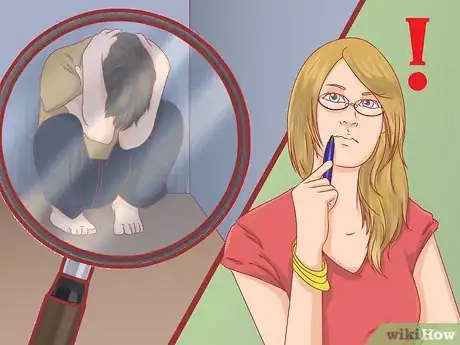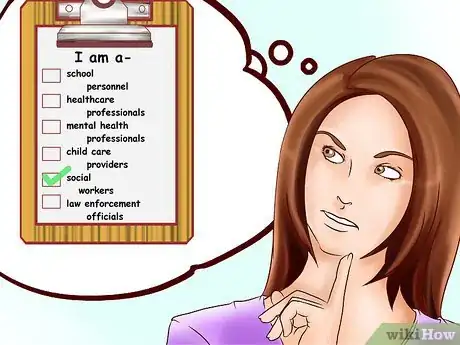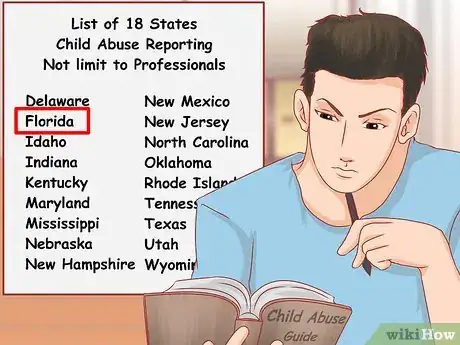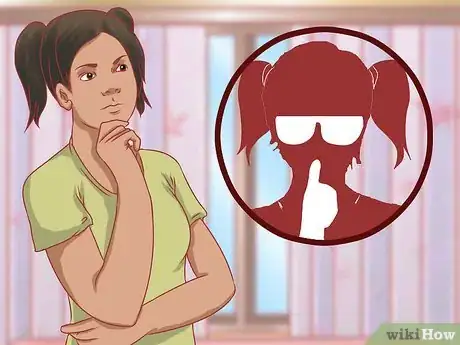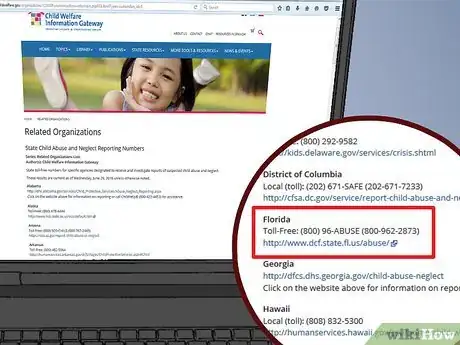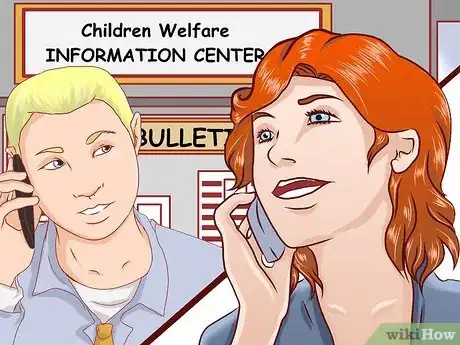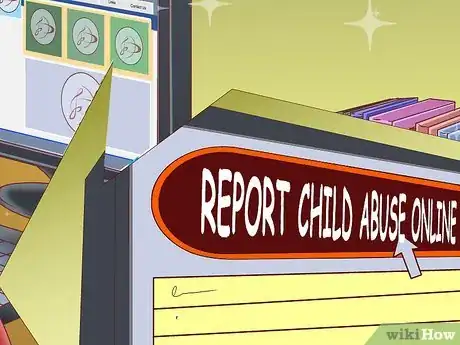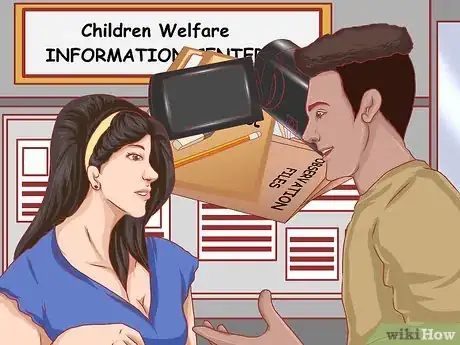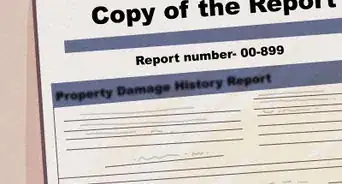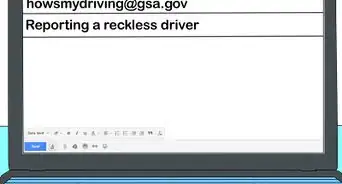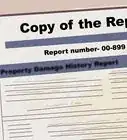This article was co-authored by Clinton M. Sandvick, JD, PhD. Clinton M. Sandvick worked as a civil litigator in California for over 7 years. He received his JD from the University of Wisconsin-Madison in 1998 and his PhD in American History from the University of Oregon in 2013.
This article has been viewed 52,699 times.
If you believe someone has abused or neglected a child, or if you believe a child is in danger of being abused or neglected anywhere in the USA, you should contact Child Protective Services (CPS). Once you contact the agency, they will review the information you provided and decide whether to open an investigation. The methods of reporting someone to CPS will differ by state, but the general process remains the same.
Steps
Preparing to Report Someone
-
1Identify abuse or neglect. CPS is supposed to intervene if a child is exposed to domestic violence or to physical or sexual abuse. Also, CPS should step in if a child is not given proper nutrition or medical care. Common signs that a child is being mistreated include:[1]
- bruises or other injuries in multiple locations or on both sides of the child’s body
- frequent or unexplained injuries, especially in a distinctive pattern (such as grab marks)
- a child’s fear of returning home
- the child’s lack of personal hygiene (dirty and/or torn clothes)
- the child exhibits sexual knowledge that is inappropriate for his or her age
- the child is in pain and has difficulty sitting or walking
- consistent hunger (the child steals or begs for food)
- untreated serious illnesses
- a child is inappropriately left alone or unattended
-
2Document the abuse or neglect. If possible, you may want to document the abuse. You can take photographs or video, or you can simply write down what you observed on the child’s body, such as the location of bruises or cuts.
- You can also take down information on who caused the injury. If you observed the abuse but do not know the adult’s name, then write out a description of the person.
- Alternately, if the child tells you who has touched him or her in an inappropriate manner, then you should document that information as well.
Advertisement -
3Figure out if you are a mandatory reporter. Every state lists a group of people who are required to report suspicions of child abuse to CPS. The list may vary by state, but it typically includes:[2]
- teachers, principals, and other school personnel
- doctors, nurses, and other healthcare professionals
- mental health professionals (such as counselors and therapists)
- child care providers
- social workers
- law enforcement officials
-
4Check if your state mandates reporting for non-professionals. Eighteen states currently require all persons who suspect child abuse to report it. This requirement is not limited to professionals. The states are:[3]
- Delaware
- Florida
- Idaho
- Indiana
- Kentucky
- Maryland
- Mississippi
- Nebraska
- New Hampshire
- New Mexico
- New Jersey
- North Carolina
- Oklahoma
- Rhode Island
- Tennessee
- Texas
- Utah
- Wyoming
-
5Decide if you want to remain anonymous. You may not want to give CPS your name out of fear of being involved in the investigation of child abuse. Perhaps you are afraid of the abuser. Or you may have been told of the abuse by a child and do not want the child to get in trouble for having told someone. Accordingly, you should consider if you want to remain anonymous.
- You should be able to report anonymously in every state. However, agencies may discourage anonymous reports because they may want to interview you as part of the investigation into the alleged abuse. If you do not want to be identified, then you should remain firm and insist on anonymity.
- With the general disappearance of pay phones, it is more difficult today to guarantee your anonymity. If you are afraid that CPS might pressure you to reveal your identity, you can think about calling from a friend’s phone. Also, some states have online reporting, which you could access from a library computer.
Reporting Someone to CPS
-
1Call 9-1-1 if there is an emergency. When a child is in imminent danger of harm, you should contact 9-1-1 instead of CPS.[4] Once the police arrive, they will contact CPS if they cannot fully resolve the issue right away.
-
2Find a hotline phone number. Most states maintain a child abuse hotline.[5] The person on the other end of the hotline will gather information from you and then forward your concerns to the local Child Protective Services. Search for your state’s child abuse hotline online by typing “your state” and “child abuse hotline.”
- You can find a list of state numbers to call by visiting the Child Welfare Information Gateway website at https://www.childwelfare.gov/organizations/?CWIGFunctionsaction=rols:main.dspROL&rolType=custom&rs_id=5. This list is continuously updated.
-
3Call the hotline. When you call, be prepared to answer questions about the child and the reason you are reporting. Try to be as concrete as possible. If you know the child’s name and the parents’ names, then you should report that information.
- You do not need to be absolutely certain that abuse is occurring. You only need to have reasonable cause to be suspicious. Child Protective Services will review the information you provide and determine whether to open a full investigation.
-
4Report online. Some states may allow you to report online. Florida, for example, has this option.[6] After navigating to the reporting screen, you will be asked various questions, such as your contact information, whether the abuse is of an adult or child, and where the abuse is taking place. You will also be asked for the victim’s contact information.
- In Florida, you have the option of reporting online anonymously.
-
5File a written report, if required. Some states will require mandatory reporters to follow up an oral report with a written one. CPS may have a form for you to use. In any event, the report should include the following information:
- the name of the child
- the child’s whereabouts
- the names and addresses of the parents or guardians
- a description of the child’s condition
-
6Offer to share documentation with CPS. If you documented the abuse or neglect, then you can offer to share your documentation with CPS. Be sure to make copies of any documentation that you have. Realize that although CPS may strive to keep your identity anonymous, you could be called into court if parental rights are terminated.
References
- ↑ http://www.ocfs.state.ny.us/ohrd/ccg/ConcernedCitizensGuide.pdf
- ↑ https://www.childwelfare.gov/pubPDFs/manda.pdf
- ↑ https://www.childwelfare.gov/pubPDFs/manda.pdf
- ↑ http://dhs.iowa.gov/report-abuse-and-fraud
- ↑ https://www.childwelfare.gov/topics/responding/reporting/mandated/
- ↑ http://www.myflfamilies.com/service-programs/abuse-hotline
About This Article
It can be hard seeing a child who is being neglected or abused, but you can help them by reporting the abuser to Child Protective Services. Although you don’t need evidence, it may help speed up the process if you have photos or videos of the abuse, or a written report of what the child has confessed to you. Search online for your state’s child abuse hotline. When you call the hotline, an operator should ask you questions about the abuse and forward your responses to Child Protective Services. Some states will need you to fill out a follow-up form, but they’ll tell you where to find it on the phone. Although it’s best to provide your own personal details, you should be able to remain anonymous if you'd prefer. If you think the child's in immediate danger, don't hesitate to call 911. For more advice from our Legal co-author, including how to identify child abuse and neglect, read on.
